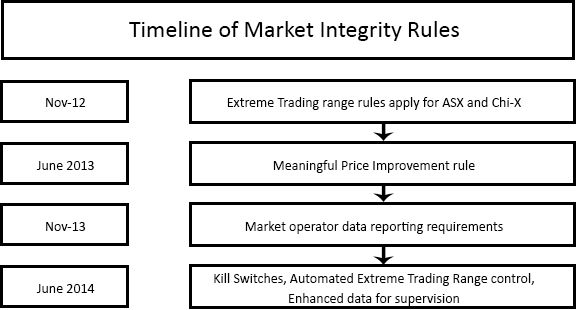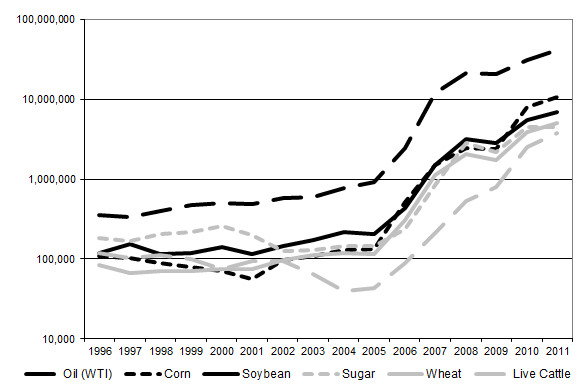How HighFrequency Trading Benefits Most Investors
Post on: 21 Май, 2015 No Comment

FORECASTS & TRENDS E-LETTER
by Gary D. Halbert
April 8, 2014
1. March Unemployment Report – The Good, Bad & Ugly
2. High-frequency Trading Actually Helps Most Investors
3. Our “ALPHA ADVANTAGE” Webinar Wednesday, April 16
A controversial new book came out in late March that lambastes so-called “high-frequency trading” on the major stock exchanges and claims that such computerized trading robs retail investors of good executions and profits on their stock orders. The book, “Flash Boys: A Wall Street Revolt,” was written by former bond salesman turned author, Michael Lewis, who appeared on CBS’ 60 Minutes on March 30. Since then, his book has stirred up quite the controversy among stock market investors.
Mr. Lewis has joined other critics who say that the booming high-frequency trading field, in which computers buy and sell stocks at lightning speed to take advantage of minute changes in prices, has essentially rigged the market against small investors. Lewis and other critics charge that high-frequency traders are essentially “front-running” investors’ orders – a practice that is otherwise illegal.
Today, I will make the counter-argument that high-frequency trading is actually good for retail investors in that it greatly increases trading volume, narrows “bid-ask” spreads and enhances trade execution for most of us. I’ll cite a recent example wherein the Toronto Stock Exchange restricted high-frequency trading and overall market volume plunged by 30%, thus resulting in worse trade executions for most individual investors.
As a result of the latest high-frequency trading controversy, these groups are being investigated by the FBI, the SEC, the New York Attorney General and of late, the Justice Department, and I’m all for that. There probably are some abuses that need to be eliminated. Yet I hope the regulators will not make the assumption that all high-frequency trading is bad for retail investors, as Mr. Lewis concludes.
Before we get into our lead discussion on high-frequency trading, let’s take a look at last Friday’s unemployment report for March. The report was initially declared quite positive, but the more we drill down into the details, the worse it looks. I’ll break it down for you just below.
Finally, I am pleased to announce that our next webinar – “HWM Alpha Advantage” will be on Wednesday, April 16 th at 2:00 PM Eastern . This webinar will outline our new program that combines multiple trading strategies with low correlation into a single investment account. This informative presentation will explain how the strategies used in Alpha Advantage work exceptionally well together, and how combining them in a portfolio can potentially increase returns significantly and reduce the overall risk of the portfolio.
March Unemployment Report – The Good, Bad & Ugly
Last Friday’s jobs report for March was initially hailed as good news because the Bureau of Labor Statistics reported that 192,000 new non-farm jobs were added last month. That was better than expected by many forecasters and was well above the 175,000 jobs created in February. But companies almost always hire more workers in March when the weather warms up. The official unemployment rate held steady at 6.7% in March.
The other encouraging news, if we can call it that, is the fact that “total private” employment finally inched above the previous peak in early 2008 when the Great Recession was starting to unfold. As you can see below, total non-farm, private sector jobs climbed to 116.1 million in March. That’s good news in that it was better than in recent months, but it has taken us six years to get back to essentially breakeven with 2008.
Here’s another way to look at it. The chart above represents only the number of non-farm private sector jobs. If we add to that number the roughly 21.9 million government jobs we have today, the country has a total of 137.9 million jobs overall. Yet that number is well below the total number of jobs we had back in 2008 of 138.5 million. That’s a deficit of apprx. 600,000 jobs .
So six years after the start of the downturn, our economy is still roughly 600,000 jobs shy of where it had been, mainly because government at all levels has been forced to cut back workers in austerity moves.
Now let’s look at the labor force participation rate. This number represents the percentage of the total population that is either working or actively looking for work. The number actually ticked higher in March to63.2%. but take a look at the longer-term trend:
Labor force participation rates increased from the mid-1960s through the 1990s, driven largely by more women entering the workforce, Baby Boomers entering prime working years in the 1970s and 1980s and increasing pay for skilled laborers. But over the past decade, these trends have leveled off, and the participation rate has fallen sharply, particularly in the aftermath of the last recession.
The question is, will the participation rate recover to the levels seen in the 1990s? Probably not in the next 20 years or longer. A late 2012 study by the Federal Reserve Bank of Chicago found that about one-quarter of the decline in labor-force participation since the start of the Great Recession can be traced to retirements.
Yet Baby Boomers retiring can’t be the whole story, though, since the participation rate has declined for younger workers too. This part of the drop is a function of various factors, including simple discouragement, poor work incentives created by public policies, inadequate schooling and training and a greater propensity to seek disability insurance. Globalization and technological change have also reduced employment and wage growth for low-skilled workers. These trends are not likely to change anytime soon.
The fierce debate now going on in Washington about extending unemployment insurance and raising the minimum wage largely ignores these issues. Such policies may affect the incomes of some Americans, but they won’t do much to expand opportunity and bring more people back into the labor force. But I’ll leave that discussion for others to debate.

High-Frequency Trading Actually Benefits Most Investors
A controversial new book debuted last week entitled “FLASH BOYS: A Wall Street Revolt” written by former bond trader turned author, Michael Lewis. Mr. Lewis was recently interviewed on CBS’ 60-Minutes program. The book, which focuses on “high-frequency trading” (HFT) has gotten a great deal of attention since then.
High-frequency traders use sophisticated technical tools and computer algorithms to rapidly trade securities. These traders use proprietary trading strategies carried out by computers to move in and out of positions in fractions of a second.
High-frequency traders move in and out of short-term positions aiming to capture sometimes just a fraction of a cent in profit per share on every trade. It is estimated that high-frequency trading now accounts for almost 50% of the volume on major US stock exchanges.
Mr. Lewis’ new book has turned a harsh spotlight on the world of high-frequency trading. He has joined other critics who say that this booming field, in which computers buy and sell stocks at lightning speed to take advantage of minute changes in prices, has essentially rigged the market against small investors. Lewis and other critics charge that high-frequency traders are essentially “front-running” investors’ orders – a practice that is otherwise illegal.
This makes for a gripping narrative, and a strong populist message. But the issue is not nearly so clear-cut, as I will explain below. High-frequency trading may be annoying to large institutional investors like pension funds and mutual funds, but it is actually a real benefit for most retail investors.
These advantages were demonstrated in a recent experiment initiated by Canada’s stock market regulators. In 2012, Canadian regulators limited the activity of high-frequency traders by increasing the fees on trading orders sent by all broker-dealers, such as trades, order submissions and cancellations. This affected high-frequency traders the most, since they issue many more trade orders than other market participants.
The effect, as measured by a group of Canadian academics, was swift and startling. High-frequency traders immediately started to reduce their number of trade orders. The number of trade orders sent to the Toronto Stock Exchange swiftly dropped by 30%. and the “bid-ask” spreads rose by 9%. an indicator of lower liquidity and higher transaction costs.
The conclusion of what happened when Canada effectively curtailed HFT is obvious: the reduced high-frequency trading resulted in lower trade volume and worse execution prices for retail investors on both “buys” and “sells.”
However, if you are an institutional investor trying to buy and sell large blocks of securities without moving the price as you trade, then high-frequency traders are a pest. They swarm all over your trade, messing with the price and driving up your cost as you build up or reduce your position, often on multiple exchanges. Ultimately this affects the return on your trades.
But if you’re an individual investor, trading for yourself, high-frequency trading can help get you better executions, lower transaction costs and create a more efficient, dynamic market. Efficiency and dynamism are good things, especially if you’re a retail investor making a single trade at a time.
In a paper published last year, Terry Hendershott of Berkeley, Jonathan Brogaard of the University of Washington and Ryan Riordan of the University of Ontario Institute of Technology concluded that, “Overall, HFTs facilitate price efficiency by trading in














